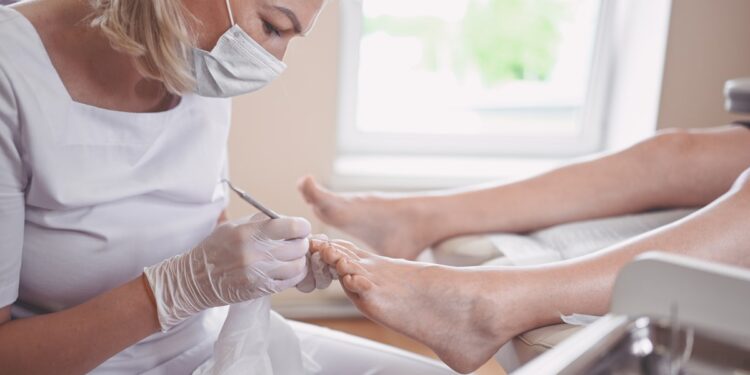The Importance of Pedicure Sanitation
Pedicures are a much-loved self-care treatment, offering relaxation and aesthetic enhancement. However, the beauty of pedicures must come hand in hand with rigorous sanitation practices to ensure safety and health. Infections, such as fungal infections, warts, and bacterial infections, can quickly spread in unsanitary conditions. Disorders like Athlete’s Foot, onycholysis, and paronychia can also arise from inadequate hygiene practices.
Ensuring high cleanliness standards not only prevents health issues but also builds trust with clients, showcasing a commitment to their well-being. For technicians, adhering to these standards is crucial for their protection and maintaining a reputable salon.
Understanding Disinfectant, Sterilization, and Sanitation
In the world of pedicures, maintaining impeccable hygiene ensures client safety and satisfaction. Here’s a brief look at key concepts surrounding pedicure sanitation:
Sanitation
Sanitation involves cleaning surfaces to remove visible dirt and debris, thus reducing pathogen numbers to a safe level. For example, regularly wiping down workstations and footbaths with antibacterial soap and water helps maintain sanitary conditions.
Disinfectant
This process uses chemical agents to kill or inactivate most pathogens on surfaces and tools. Soaking tools in hospital-grade disinfectants is a key practice, ensuring they are laid flat to air dry before reuse.
Sterilization
The most critical process, sterilization involves the complete elimination of all microbial life using methods like autoclaving metal tools. This step guarantees absolute microbial safety.
Essential Sanitation Practices
Adopting these five sanitation practices is vital for a safe pedicure environment:
1. Sterilization of Tools
Using an autoclave to sterilize tools is the gold standard. Tools should be cleaned with antibacterial soap, wiped dry, and then sterilized to prevent microbial contamination.
2. Clean Workstations
All surfaces should be wiped down with disinfectant wipes or sprays and free of debris. The use of disposable items, such as nail files, should be maximized, and single-use items disposed of properly.
3. Footbath Sanitation
Footbaths must be thoroughly cleaned and disinfected after each use. For piped footbaths, the system should be flushed with a disinfectant solution to prevent microbial buildup.
4. Hand Hygiene
Technicians must wash their hands before and after each client interaction, using hand sanitizers additionally. Gloves should always be worn during treatments.
5. Protective Gear
Wearing gloves prevents infection transmission, and masks protect against inhaling dust and chemicals. Proper ventilation in the salon ensures a safe breathing environment.
Educating Clients
Salons should educate clients on foot care and sanitation importance, empowering them to maintain hygiene practices at home. Pre-pedicure consultations help identify any potential issues, ensuring a safe service.
Staying Informed and Compliant
Salons must stay updated with the latest health regulations and sanitation guidelines. Regular staff training ensures best hygiene practices, compliance, and enhances service quality.
A Clean Experience Equals a Great Experience
By prioritizing sanitation practices, salons can provide a safe and enjoyable pedicure experience. Clients will appreciate the commitment to cleanliness, increasing their likelihood to return and recommend your services. Remember, healthy feet contribute to overall body wellness, making sanitation a non-negotiable part of any reputable salon’s offerings.
For further insights on transforming your nail business, reach out to [email protected] or visit Maisie Dunbar Beauty Brands for a consultation.

























